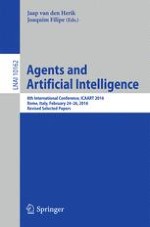2017 | Buch
Agents and Artificial Intelligence
8th International Conference, ICAART 2016, Rome, Italy, February 24-26, 2016, Revised Selected Papers
herausgegeben von: Jaap van den Herik, Joaquim Filipe
Verlag: Springer International Publishing
Buchreihe : Lecture Notes in Computer Science
